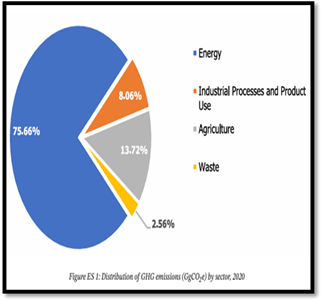7667766266
enquiry@shankarias.in
Mains Syllabus: GS III - Environmental pollution and degradation.
The government has notified draft Rules introducing targets for the reduction of greenhouse gas (GHG) emissions by “obligated entities” in energy-intensive sectors and industries.

The CCTS was launched to create a framework for the trading of carbon credits, to facilitate the reduction of emissions in energy intensive industries, and to support India’s climate commitments under the Paris Climate Agreement of 2015.

The Indian Express | Greenhouse Gases Emissions Intensity Targets